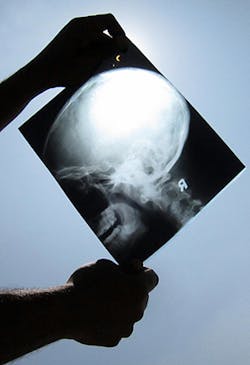Now that wireless companies are testing high-frequency bands for things like video and music streaming, it’s easy to find network analyzers that measure millimeter waves. But if you need to measure terahertz frequencies, you might have to search a little harder.
Keysight Technologies is trying to change that with the new version of a network analyzer it revealed on Tuesday. The test equipment maker said that it had developed a 1.5 THz network analyzer for the Chalmers University of Technology in Sweden, where researchers are studying circuits that can handle high-frequency wireless signals.
The new device might give an image boost to Keysight, which traces its roots to Hewlett Packard’s electronic test division, and which has started to design test equipment for measuring frequencies between 100 and 1000 GHz. Engineers have had significant trouble making wireless technology to transmit and receive these high frequency bands, and making accurate measurements has proved just as difficult.
The test equipment is built around Keysight’s PNA-X network analyzer, which alone measures frequencies between 10 megahertz and 67 gigahertz. The company upgraded the equipment with an external module developed by Virginia Diodes, a small company based in Virginia that makes modules that bolt onto test equipment to extend their range into the millimeter wave and THz spectrum.
The researchers at Chalmers are working THz components, including a new transistor design that can be mass-produced cheaply. It is also trying to fuse these circuits with passive components like filters and antennas into a single stack of silicon.
The major obstacle to using these frequency bands is the lack of technology capable of generating signals powerful enough to transmit data. The THz components that are available are typically too expensive, bulky, and power-hungry for commercial use. The payoff, though, could be gigantic: above 100 GHz, there are several hundred gigahertz of bandwidth for applications ranging from communications to wireless imaging.
Doctors are looking into THz scanners to analyze breast tumors and other cancers. Security firms have proposed using similar technology to look inside bags for concealed explosives – and determine what they are made of. It can also be used to find hidden defects in materials like ceramic, faults in semiconductors wafers, and hidden layers of paint underneath paintings.
Reaching the frequency is only part of the challenge. Henri Komrij, general manager of Keysight’s network analyzer business, said that one is phasing out errors in the measurement to make an accurate signal analysis, in an interview with Microwave Journal. Because it is difficult to generate strong signals, it is also challenging to cancel out noisy interference.
Keysight is not the only test equipment maker tackling accuracy problems. Anritsu and Rohde & Schwarz are both working to extend the frequency range of their test equipment, using parts from companies like Virginia Diodes and Oleson Microwave Labs.
About the Author

James Morra
Senior Editor
James Morra is the senior editor for Electronic Design, covering the semiconductor industry and new technology trends, with a focus on power electronics and power management. He also reports on the business behind electrical engineering, including the electronics supply chain. He joined Electronic Design in 2015 and is based in Chicago, Illinois.


